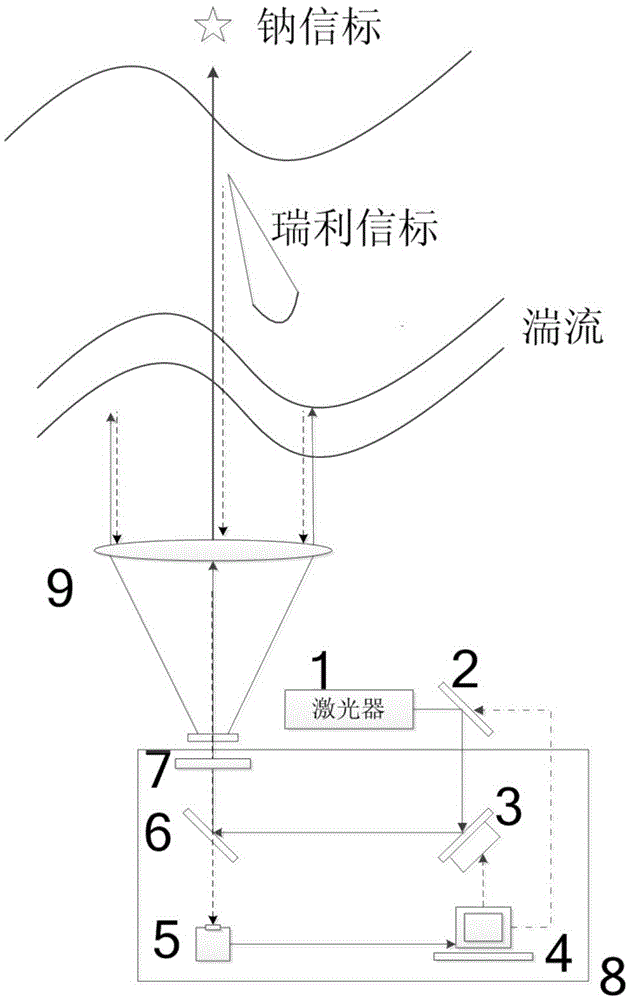Co-aperture emission and correction telescope combining Rayleigh beacon and sodium beacon
A sodium beacon and telescope technology, applied in telescopes, optics, instruments, etc., can solve problems such as restricting the observation sky area, and achieve the effect of improving detection accuracy, wide application range and small light spot
- Summary
- Abstract
- Description
- Claims
- Application Information
AI Technical Summary
Problems solved by technology
Method used
Image
Examples
Embodiment Construction
[0020] like figure 1 As shown, for the linearly polarized light emitted from the laser, the central wavelength is precisely aligned with D 2a line, and assigns 10% of the energy to D 2b On the spectral line, it reaches the spectroscopic system through the reflection of the 19-unit deformable mirror. At this time, the spectroscopic system reflects the emitted laser light. After passing through the 1 / 4 wave plate, the linearly polarized light becomes circularly polarized light, and then output through the beam expansion and collimation of the transmitting telescope, forming a sodium beacon at an altitude of 90km. In the upward path of the laser, the atmospheric molecules in the lower layer will produce Rayleigh scattering, and the backward Rayleigh scattered light at this time can be used as a Rayleigh beacon. The brightness of the Rayleigh beacon also decays exponentially with the increase of altitude. The lower the altitude, the brighter the beacon, but the stronger the foc...
PUM
 Login to View More
Login to View More Abstract
Description
Claims
Application Information
 Login to View More
Login to View More - R&D
- Intellectual Property
- Life Sciences
- Materials
- Tech Scout
- Unparalleled Data Quality
- Higher Quality Content
- 60% Fewer Hallucinations
Browse by: Latest US Patents, China's latest patents, Technical Efficacy Thesaurus, Application Domain, Technology Topic, Popular Technical Reports.
© 2025 PatSnap. All rights reserved.Legal|Privacy policy|Modern Slavery Act Transparency Statement|Sitemap|About US| Contact US: help@patsnap.com



